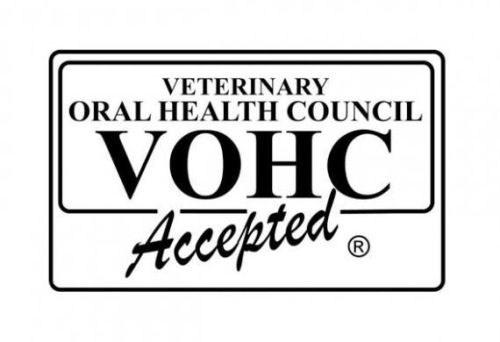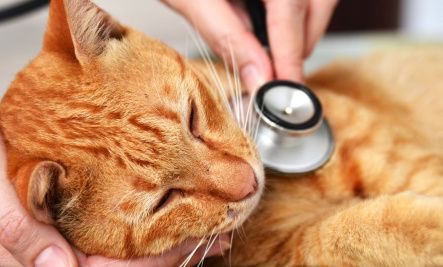It can happen to even the best pet owners. You turn around for one second and the dog is into the chocolate that was sitting on the counter, or the cat has discovered the Easter lily you thought was safely out of the way.
“We just don’t realize how determined our pets are to eat the things they shouldn’t,” Dr. Tina Wismer, DVM, medical director for the ASPCA Animal Poison Control Center, says.
Of the more than 180,000 cases that the organization handled in 2013, most of them involved pets who’d ingested human prescriptions. “Many children with ADHD don’t want to take their medications, so they leave pills on their plates, where pets can get at them,” Dr. Wismer says. “Even nonprescription medications, such as ibuprofen, can be a problem, because many brands have a sweet coating, so it’s like candy for dogs.”
As part of National Poison Prevention Week (March 15-21), Vetstreet has compiled an A-to-Z photo gallery of common pet poisons that should be on your radar. This list is not all inclusive, so for more information on these and many other toxins, check out the ASPCA Animal Poison Control Center website and talk with your vet.
Acetaminophen
Acetaminophen, which is found in Tylenol and other medications, can cause liver damage in dogs. Cats are even more sensitive: Ingestion of a single 325 mg tablet by a 10-pound cat can cause red blood cell damage and even be fatal.
Toxicity Ranking: moderate to severe.
Batteries
Batteries can be toxic to both dogs and cats, leading to ulcers in the mouth, esophagus and stomach.
Toxicity Ranking: moderate to severe.
Chocolate
Chocolate can cause seizures and death in dogs and cats. Darker chocolate, such as unsweetened baker’s chocolate, is more toxic than milk or white chocolate. Even cocoa bean mulch, when eaten in large quantities, can be a problem.
Toxicity Ranking: mild to severe
Detergents
Detergents and fabric softener sheets can cause ulcers in the mouth, esophagus and stomach in dogs and cats. The newer laundry pods, which contain concentrated detergent packaged under pressure, may pose a greater risk. When pets bite into the pod, the contents can be forcibly expelled, then inhaled or swallowed in large amounts.
Toxicity Ranking: mild to moderate.
Ethylene Glycol
Ethylene glycol is found in antifreeze, windshield de-icing agents and motor oils. Dogs and cats are attracted to its sweet taste, but as little as a teaspoon in cats or a tablespoon in dogs can cause kidney failure. Recently, antifreeze and engine coolant manufacturers have agreed to voluntarily add bittering agents to reduce the products’ appeal to pets and children.
Toxicity Ranking: severe to fatal.
Fertilizers
Fertilizers can contain poisonous amounts of nitrogen, phosphorus, potassium, iron, zinc, herbicides and pesticides. Keep dogs and cats away from treated lawns until they are dry. Check the product packaging, though, since some products must be rinsed into the lawn before it is safe to walk on.
Toxicity Ranking: mild to moderate.
Grapes
Grapes, raisins and currants — even grape juice — in small amounts can cause kidney failure in dogs.
Toxicity Ranking: moderate to severe.
Household Cleaners
Household cleaners, such as bleach, drain cleaners and toilet bowl cleaners, can cause gastrointestinal ulcers and other problems in dogs and cats.
Toxicity Ranking: varies.
Insecticides
Insecticides in flea and tick products can cause problems if not used according to labels. Insecticides that are meant for dogs can cause severe toxicity in cats, leading to signs such as vomiting, seizures and difficulty breathing. Products intended for treating the yard or house should not be used on pets.
Toxicity Ranking: mild to severe.
Jimson Weed
Jimson weed, also known as devil’s trumpet, can cause restlessness, drunken walking and respiratory failure in dogs and cats.
Toxicity Ranking: moderate.
Kerosene
Kerosene, gasoline and tiki torch fluids can cause drooling, drunken walking and difficulty breathing in dogs and cats. If these products contain antifreeze, they are even more problematic.
Toxicity Ranking: mild to severe (potentially life threatening).
Lilies
Lilies — Easter, day, tiger, Japanese and Asiatic varieties — can cause kidney failure in cats. Lilies of the valley can cause heart rhythm problems and death in dogs and cats.
Toxicity Ranking: moderate to severe.
Mothballs
Mothballs, especially if they contain naphthalene, can be toxic to dogs and cats, resulting in vomiting, diarrhea, increased drinking and urination, and seizures.
Toxicity Ranking: moderate to severe (potentially life threatening).
Medications
Nonprescription medications, such as ibuprofen, can lead to severe ulcers and anemia, as well as liver and kidney failure in pets.
Toxicity Ranking: moderate to severe (potentially life threatening).
Onions
Onions, garlic, leeks and chives can be toxic in dogs and cats. When chewed or swallowed, these ingredients can cause anemia and gastrointestinal upset.
Toxicity Ranking: mild to moderate.
Prescription Medications
Prescription medications, such as antidepressants and ADHD and cardiac drugs, are commonly ingested by pets when pills are dropped on the floor or left on counters. Even a small dose can cause problems. Toxicity Ranking: varies.
Queensland Nuts
Queensland nuts, also known as macadamia nuts, can cause lethargy, vomiting and difficulty walking in dogs.
Toxicity Ranking: mild to moderate.
Rodenticides
Rodenticides, such as mouse and rat poisons, can contain a number of different toxins, which have different effects on dogs and cats. Several common ingredients, like warfarin and coumarin, can cause blood-clotting problems and hemorrhaging.
Toxicity Ranking: mild to severe.
Sago Palms
Sago palms are one of a number of toxic plants for dogs and cats. Ingestion can lead to vomiting, diarrhea and seizures, as well as liver failure in dogs.
Toxicity Ranking: severe
Tobacco
Tobacco can be toxic to both dogs and cats. Ingestion of nicotine in the tobacco plant or in cigarettes or patches can lead to vomiting, tremors, collapse and death.
Toxicity Ranking: moderate to severe.
Unbaked Bread Dough
Unbaked bread dough can expand in the stomach. If the stomach twists, cutting off the blood supply, emergency surgery is needed. The yeast in the dough can also produce alcohol, leading to seizures and respiratory failure.
Toxicity Ranking: mild to severe.
Veterinary Prescriptions
Veterinary prescriptions, such as arthritis medications, are often meat flavored, which can be enticing to dogs. Ingestion of large quantities can result in stomach ulcers, liver failure or kidney failure.
Toxicity Ranking: moderate to severe.
Windshield Wiper Fluid
Windshield wiper fluid can contain methanol or ethylene glycol. Ingestion of methanol can cause low blood sugar and drunken walking in dogs and cats.
Toxicity Ranking: mild to moderate.
Xylitol
Xylitol is a sugar-free sweetener commonly found in chewing gum, breath mints and toothpaste. In dogs, it can lead to dangerous drops in blood sugar and liver failure.
Toxicity Ranking: mild to severe.
Yard Products
Yard products, including snail and slug bait, herbicides and fertilizers, are never good for pets. Signs will vary by the ingredient.
Toxicity Ranking: varies.
Zinc
Zinc toxicity can happen when dogs and cats eat metal or coins. Ingestion of pennies minted after 1982 can be more problematic. Zinc can cause anemia, as well as liver, kidney or heart failure.
Toxicity Ranking: moderate to severe.

















You must be logged in to post a comment.